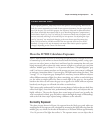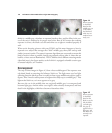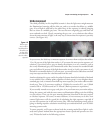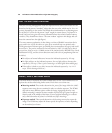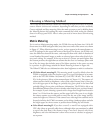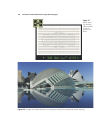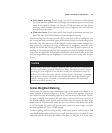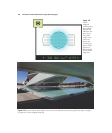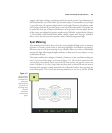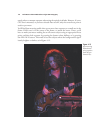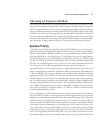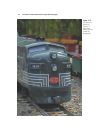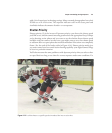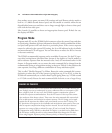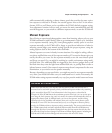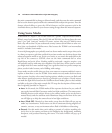
suggests, the light reading is weighted towards the central portion, but information is
also used from the rest of the frame. If your main subject is surrounded by very bright
or very dark areas, the exposure might not be exactly right. However, this scheme works
well in many situations if you don’t want to use one of the other modes. This mode can
be useful for close-ups of subjects like flowers, or for portraits. You can adjust the size
of the center area assigned the greatest weight using CSM #b4, as described in Chapter
9. The available circles include 6mm, 8mm, 10mm, 13mm, and “Average” (which in
effect, covers the entire screen to produce what is called Average metering).
Spot Metering
Spot metering is favored by those of us who used a hand-held light meter to measure
exposure at various points (such as metering highlights and shadows separately).
However, you can use Spot metering in any situation where you want to individually
measure the light reflecting from light, midtone, or dark areas of your subject—or any
combination of areas.
This mode confines the reading to a limited 3.5mm area in the viewfinder, making up
only 2.5 percent of the image, as shown in Figure 4.11. The circle is centered on the
current focus point (which can be any of the 39 focus points, not just the center one
shown in Figure 4.11), but is larger than the focus point, so don’t fall into the trap of
believing that exposure is being measured only within the brackets that represent the
active focus point. This is the only metering method you can use to tell the D7000
Chapter 4 ■ Getting the Right Exposure 109
Figure 4.11
Spot metering
calculates expo-
sure based on a
center spot
that’s only two
2.5 percent of
the image area,
centered
around the
current focus
point.



